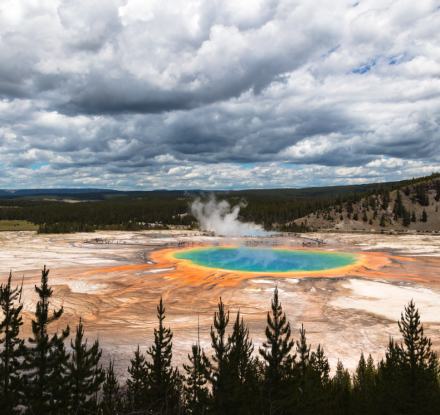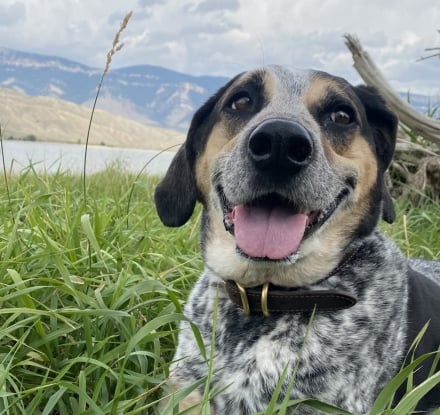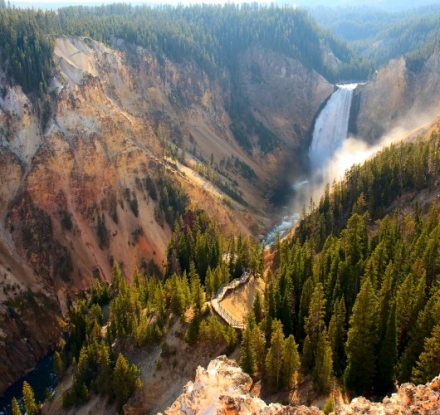
Smokey’s Message Bears Repeating
There was a fire in Yellowstone the other day. It was the first wildfire of the year, and it was spotted on a steep rocky slope east of Canyon Village. The National Park Service determined that it was caused by lightning, and it was not a threat to park visitors. A wildfire caused by lightning is not an unusual thing in Yellowstone. The park averages about 35 lightning-caused fires and up to 10 human-caused fires each year.
What struck me about this fire, though, was that it was reported by a group of hikers trekking the Seven Mile Hole trail, a 9.7-mile trail that begins on the rim of the Grand Canyon of the Yellowstone, drops 1,000 feet and then meanders along the Yellowstone River.
The hikers did exactly the right thing by reporting it, and I’m sure that the fire-management folks in Yellowstone were pleased. Reporting a fire tops a list of fire-safety tips and rules that the National Park Service promotes to visitors as part of an ongoing and aggressive fire-awareness campaign.
While fire-management practices may have changed over the years, fire safety tips have stayed pretty much the same ever since the U.S. National Forest Service launched its Smokey Bear public awareness campaign in 1944. Every child for the next seven-plus decades has been taught to recite his message – “only YOU can prevent forest fires.” I recall a poster in my grade school gymnasium with the familiar blue jeans-clad, humanized brown bear with earnest brown eyes and a ranger hat personalized with his moniker “Smokey.” The poster’s text read “Only You.” Those were the only words necessary, since everyone in my school – and most likely the entire country – knew what words should follow.
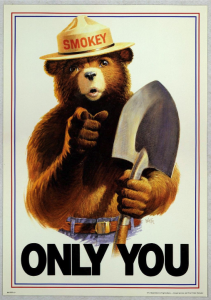
Smokey Bear posters were in schools and other public places for decades.
Smokey was a U.S. Forest Service creation, and the evolution of the campaign stemmed from World War II-era pragmatism, not a specific fire event. Most able-bodied men – including large numbers of trained firefighters – were serving in the military, and the explosive attacks on Pearl Harbor were on everybody’s mind. The United States was left with frighteningly little manpower and poorly positioned to put out fires caused by another attack or other human or natural causes.
The U.S. Forest Service and other land-managing agencies decided the best way to address the issue was to empower an entire country to be aware of how to prevent fires and what to do if one occurs. Partnering with the War Advertising Council (now just called the Ad Council), the “Smokey Bear Wildfire Prevention Campaign” was born (although that mouthful of a title was developed a few years later).
With the help of the Forest Service and War Advertising Council, Smokey evolved into what we’d now call a vertical marketing campaign. There were plush toys, building blocks, cups, statues and even a song (which referred to the character as Smokey the Bear instead of Smokey Bear). I had a book called “Smokey Bear and the Campers,” and it was one of my favorite bedtime books.
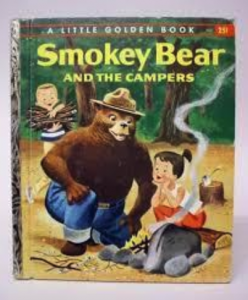
The Smokey Bear campaign included a variety of toys, books and other keepsakes.
Smokey’s popularity continued long after the war, and it seemed that Smokey grew up right along with the country. He received his name in 1950 after a fire in New Mexico’s Capital Mountains burned a bear cub who had climbed a tree. The cub survived, and the firefighters who retrieved him honored his bravery by naming him “Smokey.” Smokey the actual bear lived out his days at the National Zoo in Washington D.C., and he was buried back in Capitan after his 1976 death.
The Smokey campaign is 75 years old this year, and thanks to a few forward-thinking advertising pros and an on-the-ball government agency, his message is as timeless as ever. I’m sure those hikers – who I consider heroes for reporting the fire – remembered Smokey’s earnest brown eyes, jaunty ranger hat and finger pointing directly at them reminding them, simply, “only you.”
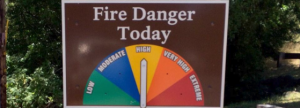
As fire season continues, Smokey’s message is as important as ever.
Until next time, I’m loving live and re-reading “Smokey Bear and the Campers” here in Cody Yellowstone.


